The Sky at Night
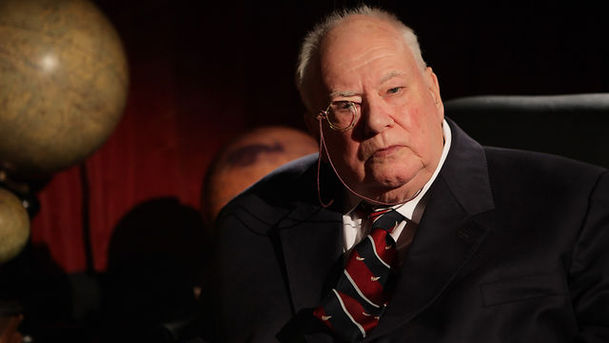
The Sky at Night with Sir Patrick Moore has been reporting on space missions, astronomical events and cosmic discoveries, since its start in 1957. Every month, Sir Patrick is joined by his team of astronomer's: Dr Chris Lintott, Pete Lawrence, Paul Abel and Dr Chris North.

The Sky at Night - A Journey through Space and Time
Patrick Moore looks back over five decades of The Sky at Night, recalling the history of space exploration and the major astronomical discoveries.
Details
The Sky at Night - A Spin around the Sun
Patrick Moore offers advice on how to observe the sun and its many brilliant features. Chris Lintott demonstrates how to split light into a spectrum.
Details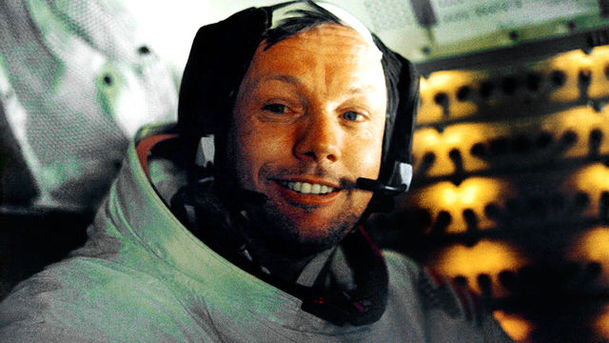
The Sky at Night - Apollo 11: A Night to Remember
Using archive sound, satellite footage and film taken by the astronauts, Patrick Moore presents the story of mankind's first journey to another world.
Details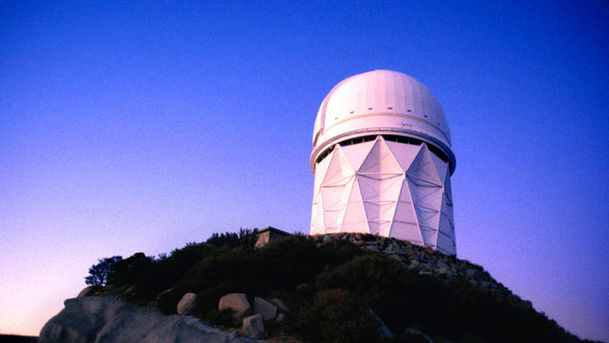
The Sky at Night - Autumn Sky
Sir Patrick Moore hosts an autumn equinox party in his garden and talks to Dr John Mason about what to look for in the night sky at this time of year.
Details
The Sky at Night - Battle of the Giants
Planets Jupiter and Saturn have moons which perplex with their strange appearance. Two astronomers discuss which planet, and its moons, we should return to.
Details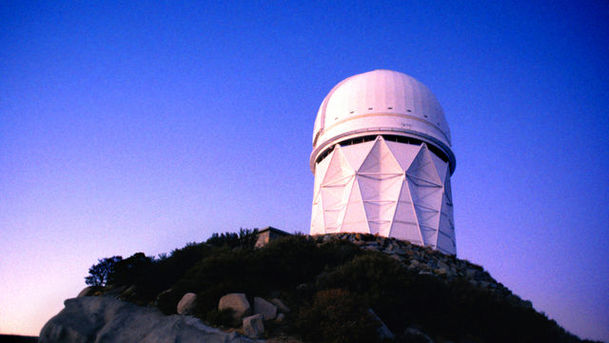
The Sky at Night - Big Bangs
The world of astronomy. Sir Patrick Moore discovers more about gamma ray bursts, and Dr Chris Lintott is at NASA to find out the latest news from the Mars Polar explorer.
Details
The Sky at Night - Birthday Party
Fifty years after the first programme went out, Sir Patrick Moore reflects on how astronomy has changed with some amusing clips from the programme's archives.
Details
The Sky at Night - Black Holes and Black Magic
Sir Patrick Moore uses magic to explain the mysteries of black holes and the wonders of the Universe.
Details
The Sky at Night - Black Holes and Black Magic
Sir Patrick Moore uses magic to explain the mysteries of black holes and the wonders of the Universe.
Details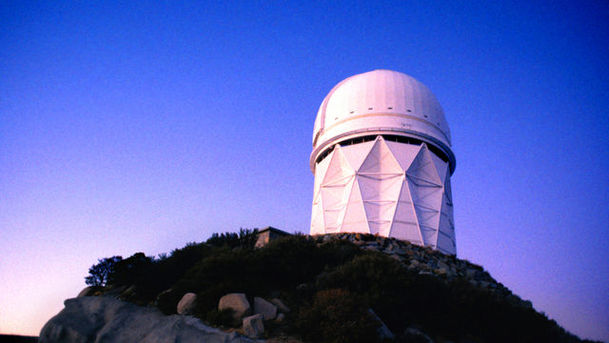
The Sky at Night - Close Encounters
Patrick Moore discusses the chances of an encounter with an asteroid, after telescopes recently got a unique view of an asteroid disintegrating in our atmosphere.
Details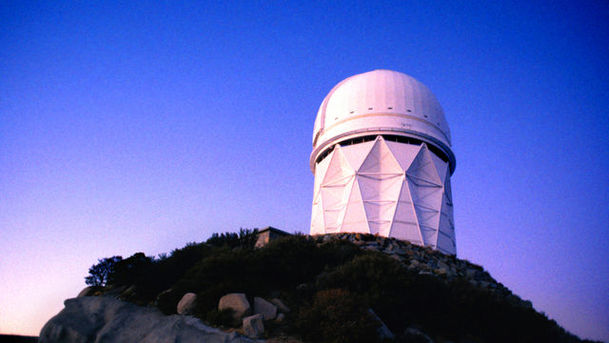
The Sky at Night - Coronas of the Sun
Sir Patrick Moore investigates the longest total eclipse of the sun for many years in India and China, with the help of Pete Lawrence and the latest pictures.
Details
The Sky at Night - Cosmic Debris
Patrick Moore investigates comet tails, meteorites and asteroids and discovers the terrible consequences of a cosmic collision with the Earth.
Details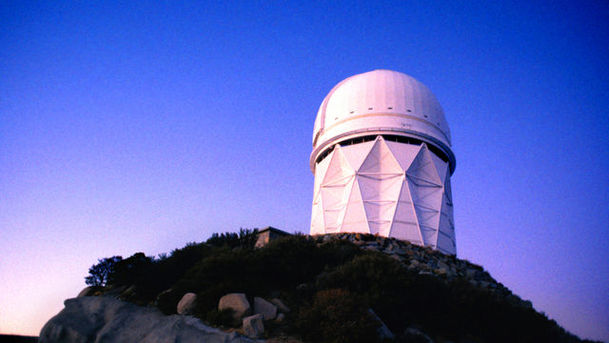
The Sky at Night - Double Vision
Astronomy. Dr Chris Lintott and Sir Patrick Moore report on Arizona's Large Binocular Telescope, the world's most most advanced optical telescope.
Details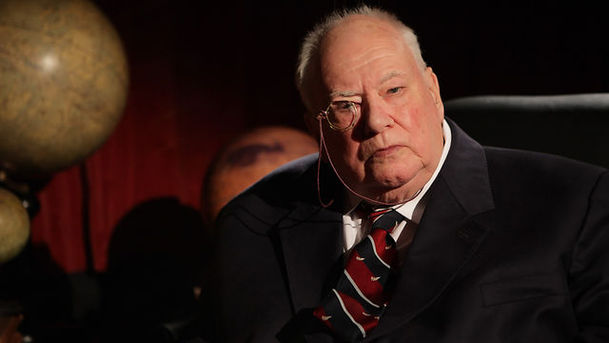
The Sky at Night - Events on Jupiter
In July 2009 a large object crashed into Jupiter and in May 2010 its southern equatorial belt disappeared. Patrick Moore and guests discuss the latest events.
Details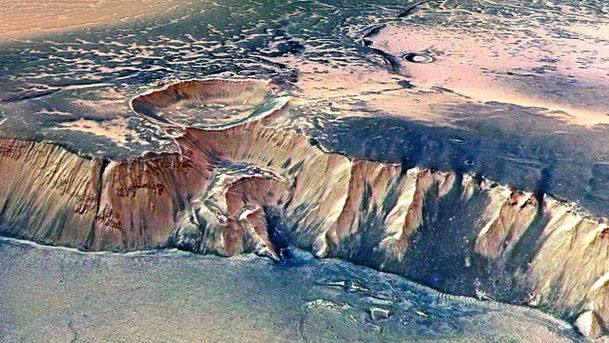
The Sky at Night - Exploring Mars
Sir Patrick Moore and Chris Lintott explore Mars, which astronomers, writers and philosophers have speculated about the possibility of containing life for centuries.
Details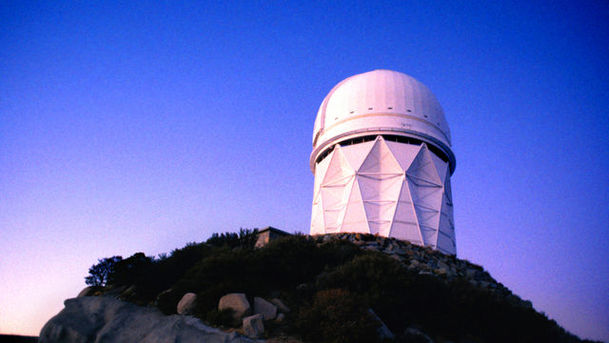
The Sky at Night - Galaxy Zoo
Patrick Moore looks at the results recorded by more than 150,000 volunteers who've taken part in the Galaxy Zoo project, which aims to classify over a million galaxies.
Details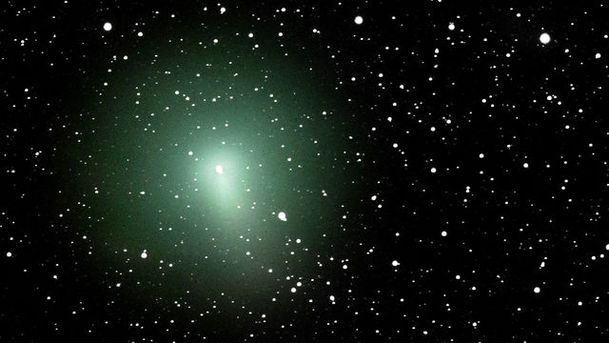
The Sky at Night - Ghostly Travellers
Comets are strange and exotic objects, the remnants from dead stars. Patrick Moore discusses NASA's EPOXI mission, which hopes to rendezvous with comet Hartley 2.
Details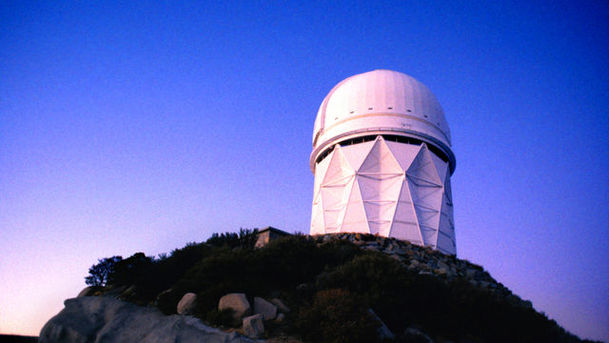
The Sky at Night - Herschel in the Red
Patrick Moore discusses what Herschel, Europe's biggest and most expensive space satellite, will do once it begins its infrared exploration of the universe.
Details
The Sky at Night - Home from Home
Patrick Moore finds out more about a mysterious new Earth-like planet on our cosmic doorstep that has rocked the astronomical community.
Details
The Sky at Night - Jodrell Bank
Patrick Moore celebrates the radio telescope at Jodrell Bank, responsible for the discovery of quasars, gravitational lenses and groundbreaking research into pulsars.
Details
The Sky at Night - Jodrell Bank
Patrick Moore celebrates the radio telescope at Jodrell Bank, responsible for the discovery of quasars, gravitational lenses and groundbreaking research into pulsars.
Details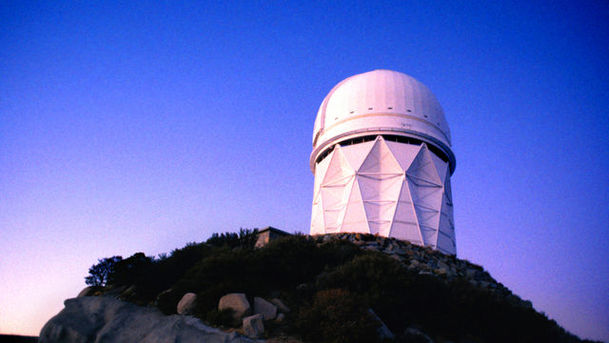
The Sky at Night - Jupiter Rising
Patrick Moore and Jupiter experts John Rogers and David Rothery examine the huge scar in the planet's gas cloud caused by the impact of a large, mysterious object.
Details
The Sky at Night - Last Man on the Moon
Chris Lintott visits the Johnson Space Centre to talk to Apollo 17's Commander, Eugene Cernan, about his memories of being the last man on the Moon in 1972.
Details
The Sky at Night - Life
Over 400 extra-solar planets have been discovered. Is anything living on them and if so, is it intelligent? Sir Patrick Moore debates the question of life in the universe.
Details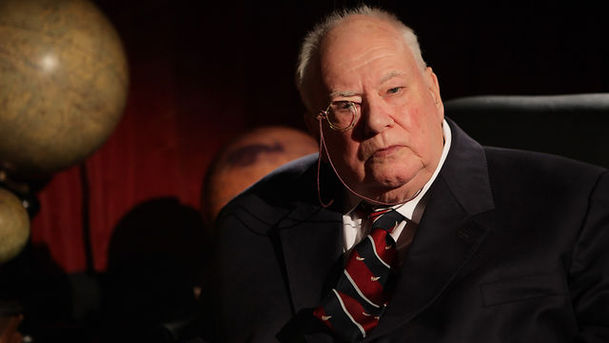
The Sky at Night - Light Echoes
Light echoes are reflections of light from distant objects in space. Sir Patrick Moore and his guests explain what they look like and how they can be seen.
Details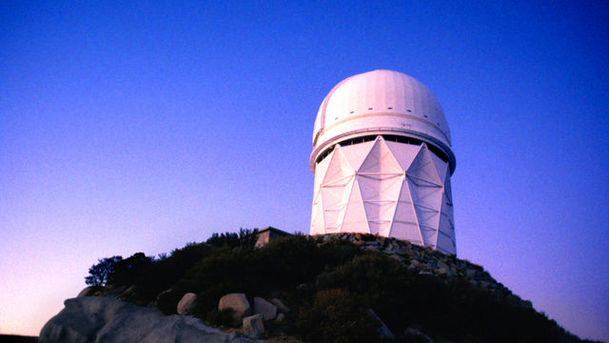
The Sky at Night - Light Fantastic
Sir Patrick Moore charts the development of the telescope over four centuries and fasts forward to meet the astronaut who repaired the Hubble Space Telescope.
Details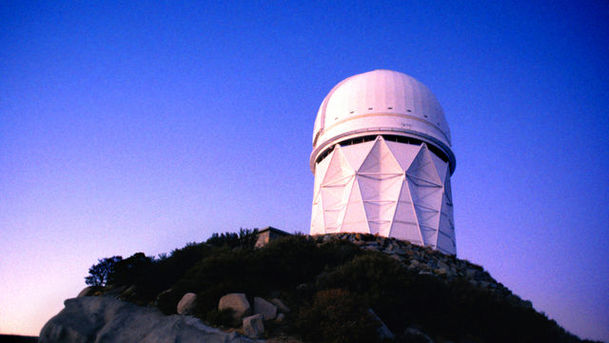
The Sky at Night - Lunar Impact
Observers now know the Moon holds water. Witnessing the lunar impact of NASA's new probe are Chris Lintott, at the Palomar observatory, and Patrick Moore, at home.
Details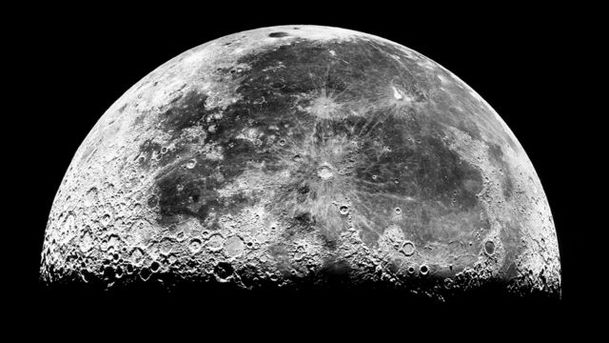
The Sky at Night - Mapping the Moon
Patrick Moore presents a guide to the most familiar body in the night sky, whilst Chris Lintott gives tips on how to observe the moon.
Details
The Sky at Night - Martian Adventures
Patrick Moore celebrates the success of the Martian rovers Spirit and Opportunity. Chris Lintott reports from NASA's jet propulsion lab about the Phoenix mission.
Details
The Sky at Night - Messenger to Mercury
Star-gazing documentary series. As the spacecraft Messenger finally reaches Mercury, it offers up enthralling pictures of the planet's hidden side.
Details
The Sky at Night - Meteor Mania
In his garden, Patrick Moore is joined by Dr Brian May and Jon Culshaw to watch the cosmic firework display known as the Perseid meteor shower.
Details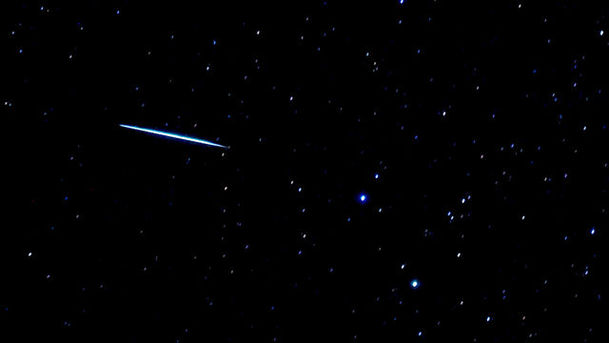
The Sky at Night - Monster Star
Astronomers discovered the brightest and most massive star to date, and Sir Patrick Moore and Dr Chris Lintott are joined by one of the team who discovered the star.
Details
The Sky at Night - Neighbourhood Watch
Containing trillions of stars, Andromeda is the largest galaxy in our neighbourhood. Patrick Moore unravels some mysteries in the star systems that surround us.
Details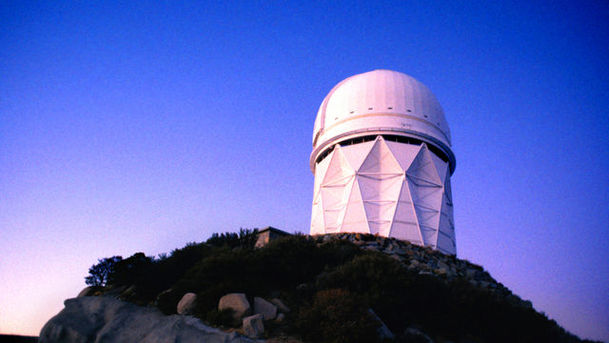
The Sky at Night - Other Worlds
Patrick Moore wonders if there is life beyond Earth, while Chris Lintott spends the night with the giant Keck Telescope and meets alien hunter Dr Jill Tarter from SETI.
Details
The Sky at Night - Return to the Moon
Patrick Moore finds out about British ambitions to go to the Moon and Chris Lintott travels to NASA to hear about plans to blast a crater in the lunar surface.
Details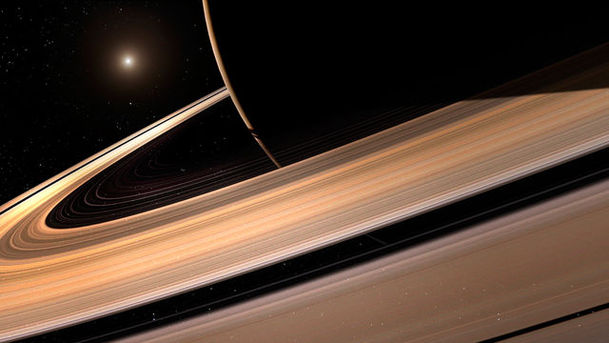
The Sky at Night - Ring World
Patrick Moore is joined by Professor Michele Dougherty and Professor Carl Murray to discuss Saturn and its rings system. Pete Lawrence shows how to observe it in May.
Details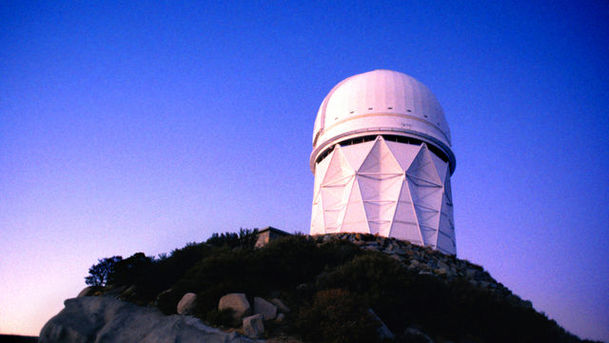
The Sky at Night - Rise of the Phoenix
The NASA mission Phoenix has been on Mars a month. Dr Chris Lintott travels to Tucson, Arizona to find out how the spacecraft is doing.
Details
The Sky at Night - Robonet
Patrick Moore investigates Robonet, the network of telescopes which links the cosmos directly to a laptop and can react immediately to phenomena such as gamma ray bursts.
Details
The Sky at Night - Robonet
Patrick Moore investigates Robonet, the network of telescopes which links the cosmos directly to a laptop and can react immediately to phenomena such as gamma ray bursts.
Details
The Sky at Night - Saturn
Dr Chris Lintott advises on how best to see Saturn, whilst Sir Patrick Moore finds out the latest from the Cassini mission which is currently orbiting Saturn.
Details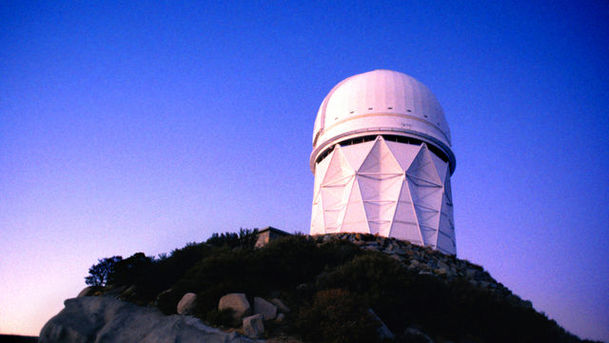
The Sky at Night - Sputnik's Children
Chris Lintott finds out how British technology is leading the way in satellite science, and Patrick Moore looks at the threat from space debris facing astronauts.
Details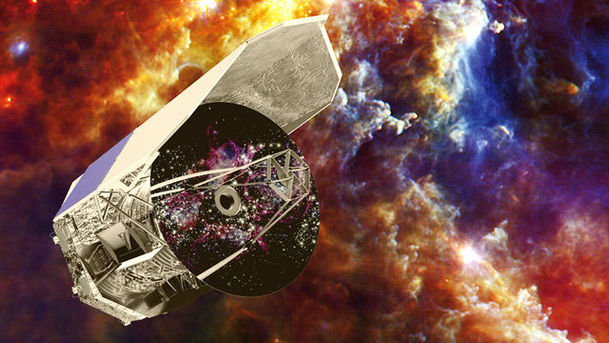
The Sky at Night - Star Birth
Patrick Moore is joined by Derek Ward-Thompson and Chris North to examine the latest stunning images of star-forming areas of our galaxy from the Herschel telescope.
Details
The Sky at Night - Sting in the Tail
Sir Patrick Moore examines the summer constellation Scorpius, and locates our nearest black hole.
Details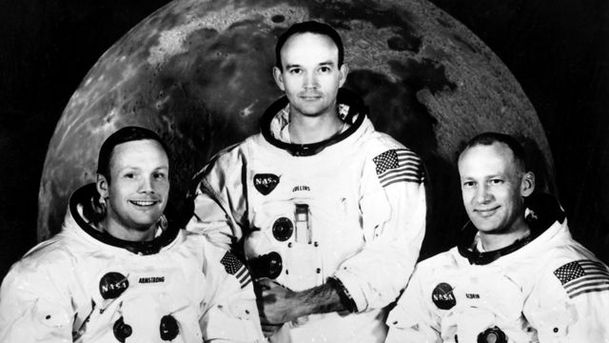
The Sky at Night - The Apollo Miracle
The 29th July 1969 heralded one of the greatest achievements in human exploration when man stepped on the moon. Forty years on, Patrick Moore and guests reminisce.
Details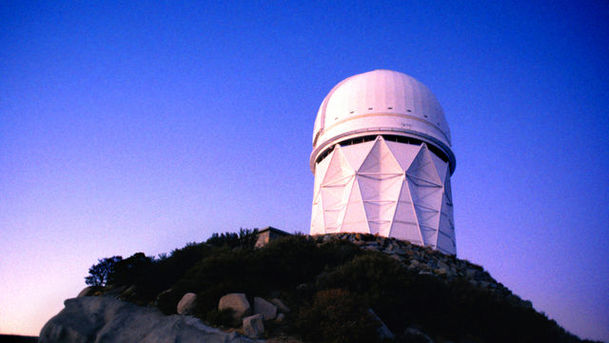
The Sky at Night - The Fountains of Enceladus
Sir Patrick Moore talks to the scientists who are trying to unlock the secrets of Saturn's mysterious moon Enceladus, which has amazing ice geysers.
Details
The Sky at Night - The Grand Collision
Patrick Moore looks ahead two billion years to the time our own Milky Way collides with Andromeda, which will rip apart the fabric of both galaxies.
Details
The Sky at Night - The Grand Collision
Patrick Moore anticipates the collision of our own Milky Way with Andromeda in two billion years' time. He explains the role that dark matter will play.
Details
The Sky at Night - The Great Bear
Patrick Moore and his team look at Ursa Major, a highly recognisable constellation and a rich source of galaxies, double and variable stars and the Hubble Deep Field.
Details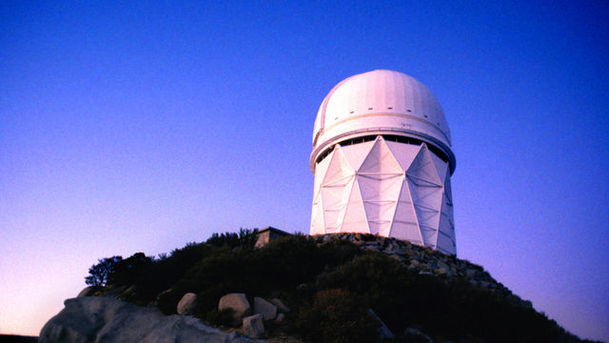
The Sky at Night - The Great Observatories
Following the Hubble telescope's overhaul, Patrick Moore and Chris Lintott examine its latest findings and the data from the Spitzer and Chandra telescopes.
Details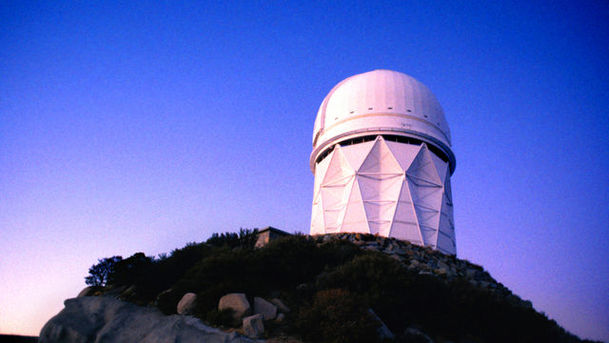
The Sky at Night - The Merry Dancers
The world of astronomy. Dr Chris Lintott travels to a radar facility in northern Norway to discover the causes behind the Aurora Borealis, or Northern Lights.
Details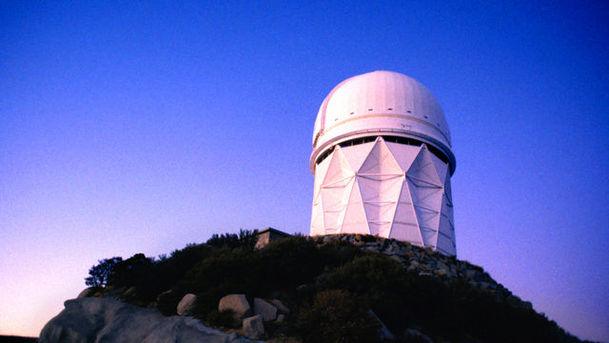
The Sky at Night - The Spirit of Mars
Featuring an interview with Prof Steve Squyres, investigator of the Mars Exploration Rover Mission, about the attempts to rescue the ensnared rover Spirit.
Details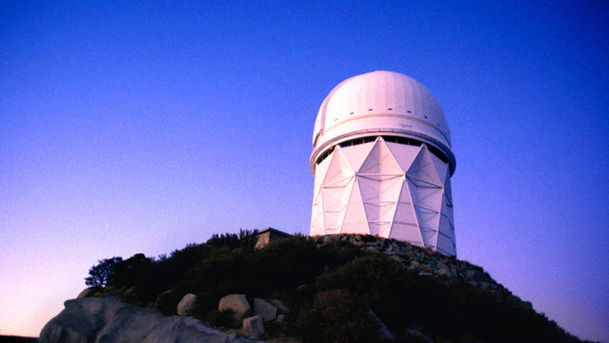
The Sky at Night - The Splendour of the Sun
Sir Patrick Moore is joined by the Astronomer Royal for Scotland, Professor John Brown and Dr Chris Davis as they take a tour of the sun.
Details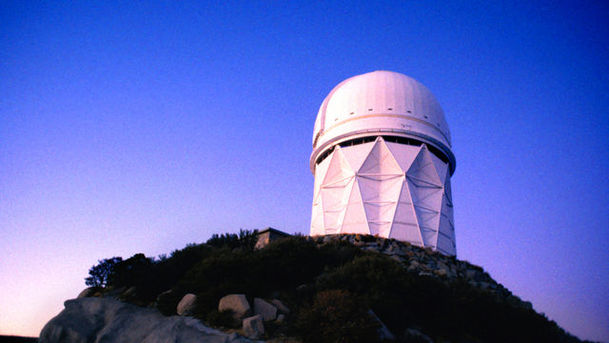
The Sky at Night - The Sun in Splendour
Patrick Moore is joined by Professor John Brown and Dr Chris Davis for a tour of the Sun, Earth's primary source of energy, without which life would not exist.
Details
The Sky at Night - The Sun Revealed
The world of astronomy with Patrick Moore. The start of a new solar cycle means the Sun's activity is about to hot up.
Details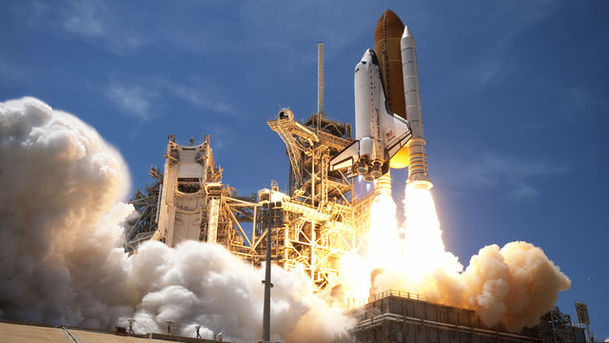
The Sky at Night - The Universe from Atlantis
Sir Patrick Moore and Dr Chris Lintott meet the crew of Atlantis to talk about the future of spaceflight and the legacy of the Space Shuttle.
Details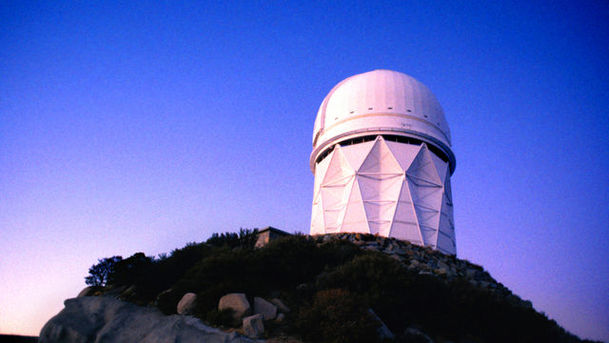
The Sky at Night - The Winter Sky
Sir Patrick Moore is joined by Dr Chris Lintott and Pete Lawrence, plus a host of stargazers searching for the best the winter night skies have to offer.
Details
The Sky at Night - Time Lord
In an anniversary programme, Patrick Moore travels back in time to see the first recording of The Sky at Night which took place 50 years ago, and then forward to 2057.
Details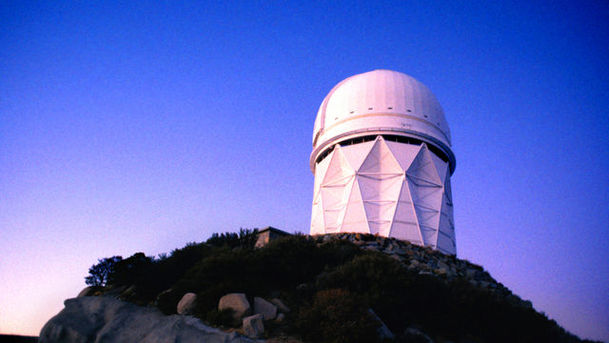
The Sky at Night - Twinkle Twinkle
January provides the perfect opportunity to observe stars, planets and galaxies. Sir Patrick Moore takes us on a tour of the winter sky.
Details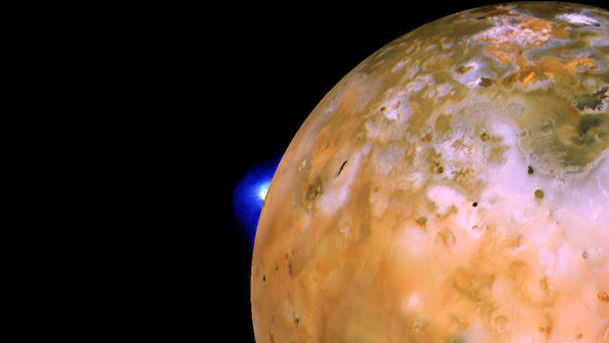
The Sky at Night - Volcanoes of the Solar System
Sir Patrick Moore looks at how volcanoes on the planets and moons of the solar system can influence our own planet.
Details
The Sky at Night - We Just Don't Know
Astronomy. Sir Patrick Moore celebrates the 666th edition of the programme by asking cosmologists exactly how much we know about the Universe.
Details